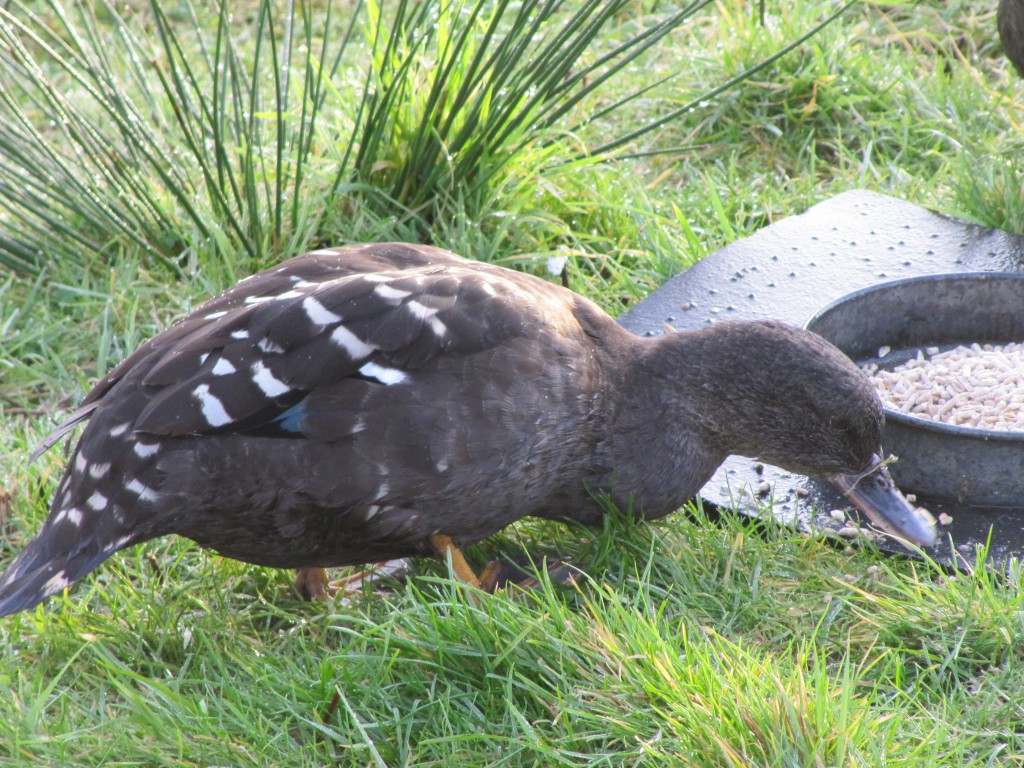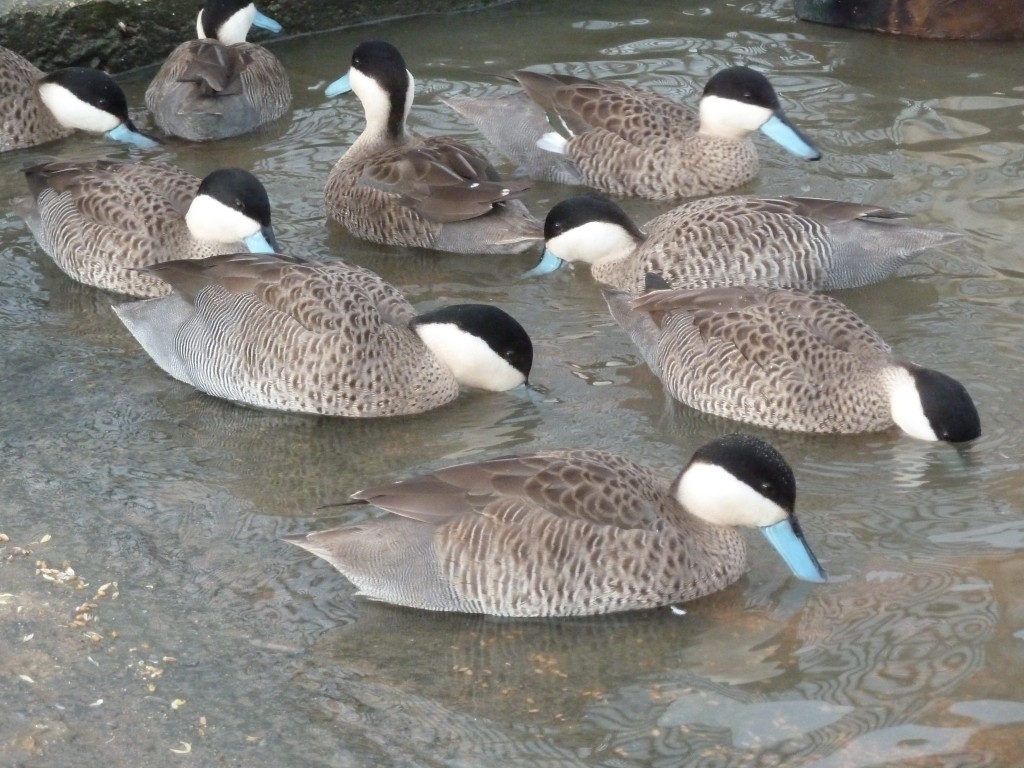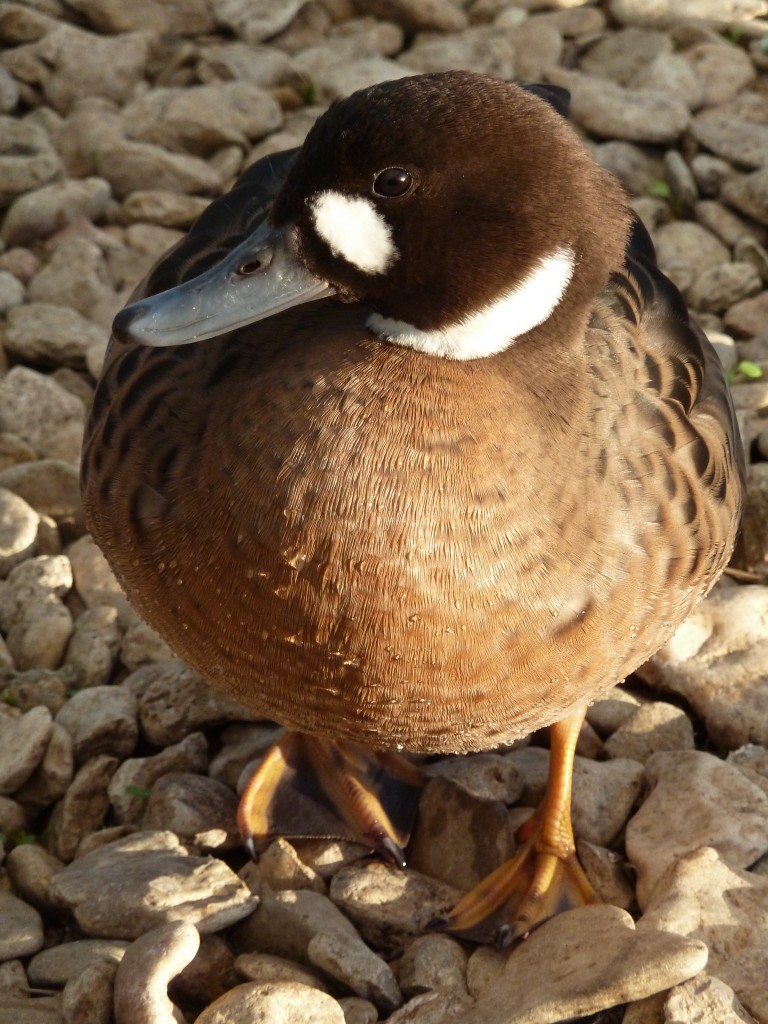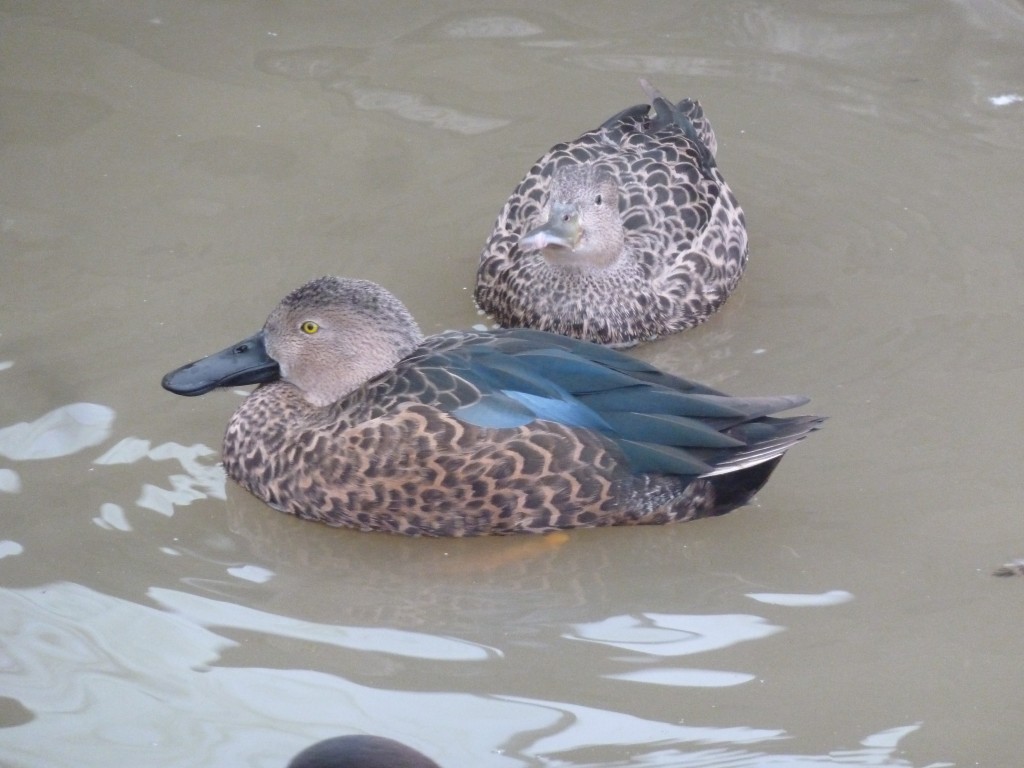Another selection of "early birds!"
In addition to the previous post, some more southern hemisphere species are also beginning to get in the mood at the WWT Slimbridge Wetlands Centre this week...

This gorgeous SA black duck female made a phenomenal effort in 2013; incubating in minus temperatures in a nestbox looking straight into south-westerly winds. Her down was whipped out from around her and the poor love was left with just her brood patch to keep them warm. After this intrepid effort, I was ever so proud to help her rear 3 healthy and strapping youngsters. Increasing our holdings from just 4 birds up to 7, this species is still on the brink within WWT collections. And so in 2014, I will be keeping my beady eye on adult pair number 2! Stimulated by rainfall and foodstuffs, it's about time we separated the breeding pairs out into breeding pens in order to kick start their breeding behaviour with high protein food and lots of natural foraging.

Who can spot the Male Puna by the way? Did you know that they are reliably sexually dimorphic? It's subtle but true. Only the male Puna has striped flanks, with the females keeping the stripes on their rumps only. There is only one male in this picture; got him?
The Puna teal is also an early bird when it comes to breeding. One of the most opportunistic of wildfowl; I have seen these beauties hatch out ducklings as late as November, and as early as March! Their nest designs are as diverse as their breeding times, using ground nests, cavity nests and platform nests as well as a variety of boxes. Most females stick to their own personal favourite though, and so you can learn a bird's character and learn to predict her tactics... Mostly Puna are shy little birds, with their own agenda but a friendly attitude. They jump off their nests ASAP when you approach, and tend to stand a few metres away with their metaphorical hands on their hips wildly gesticulating. There is one particular female however who has the confidence to bite me! I'm sure you guessed it; but she's our best breeder too :) Why approach their nests at all? Well we have a variety of species breeding in one area, and some of these are parasitic nesters. It is important to check every nest just one time between 15-20 days to a) remove rotten eggs b) check fertility and c) to make sure who's whose!

The Bronzewing duck is one of the feistiest little ducks I've ever had the pleasure to encounter. A great friend of mine and the Trust is Rosemary Sharp, and her love for Bronzewings borders on obsession. She believes 100% that these birds have a fabulous memory for partners, people and routines. We once received a pair from her which moved all the way across the country to the Arundel Wetland Centre, and after a 2 year jaunt and a temporary stint at Slimbridge; recognised her nearly three years later. They hollered at her, allowed affection (which we never offer!) and even began to sit and rest and preen and even breed in the same spots as before.
These hardy little birds are bundles of character, and their "chirrup whistle quack" pair display calls are easily recognisable over 100's of different species. They maraud like pirates, and the ducklings are no different. They will claim their juvenile pens as miniature territories, and will rigorously interrogate newcomers to their little kingdoms. They make brilliant display birds due to their natural human/bird interactions and observable behaviours. Let's hope for some more cheeky chappies for the Downy Duckling Tours come summer.

Mmm... Cape Shoveler...
The Cape is a handsome little duck. We've been coddling these juveniles for two years now! As they approach maturity, pairs have begun to form. As with all southern hemisphere birds, it is not out of character to expect eggs quite early on in spring. The nature of their nests and eggs and behaviour however makes them quite hard to manage I find... Their eggshells are definitely the thinnest of all the species we keep, second to none. The eggs are also particularly tiny, especially tiny when you consider the size of the adult bird, and the fact that they need to fit a mini shoveler beak inside it! The species is an egg burier, but not a good nest builder. The species hates disturbance, but is unreliable. Annoying!!! Their eggs are susceptible to excess humidity, but also drying out. The negatives go on and on...
Nevertheless, this rare little duck is considered very important in the captive world, and I use every ounce of effort to allow them successful breeding every year. Hopefully this new generation will offer some security against the clock for this species at WWT centres.

